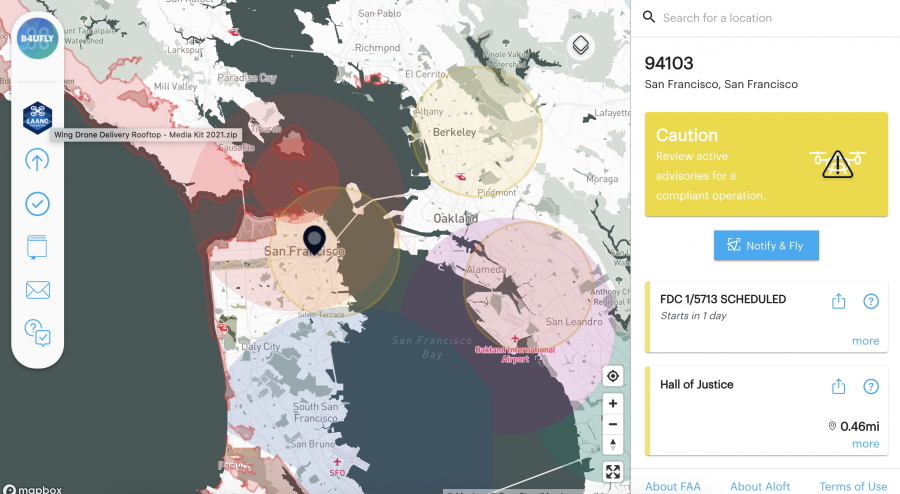If you missed Part 1 of this guide, be sure to read it for essential pre-flight considerations.
While the world offers plenty of exciting opportunities for drone enthusiasts, it’s vital to be aware of the regulations governing drone flight in your area. Although some locations may prohibit drone usage, many more welcome it. This guide aims to help you determine whether your chosen spot is legally suitable for flying your drone, both in the United States and abroad.
General Guidelines for Drone Flying in the United States
Drone regulations in the United States can vary not only from rules in other countries but also from state to state, city to city, and even park to park. The FAA governs outdoor drone flights at the federal level, but individual landowners may have additional restrictions. Therefore, it’s essential to ensure your drone flight complies with all relevant regulations. Here’s how you can ascertain the legality of your drone flight:
1. FAA Compliance Check: Visit the B4UFLY Website
The most reliable way to determine whether your drone flight aligns with FAA regulations is by visiting the FAA’s “B4UFLY” website. Previously known as “Know Before You Fly,” this platform was established in collaboration with the Association for Unmanned Vehicle Systems International (AUVSI), the Academy of Model Aeronautics (AMA), and the Federal Aviation Administration (FAA). The website is currently operated by Aloft, formerly known as Kittyhawk.
Here’s what you’ll find on the B4UFLY desktop site:

- A clear “status” indicator to determine if your flight is safe to proceed.
- Filtering options for different types of flights and controlled areas.
- Free information on controlled airspace, special-use airspace, critical infrastructure, airports, national parks, military training routes, and temporary flight restrictions.
- A location search or pin placement to assess flight safety at different locations.
- Access to additional FAA drone resources and regulatory information.
If you prefer a mobile app, the B4UFLY app is available for free download on the App Store for iOS and the Google Play Store for Android devices.
2. DJI GEO System for DJI Drone Owners
For DJI drone owners, complying with FAA regulations is made more accessible through the GEO System. This software is integrated into most DJI drones and offers information on safe flying zones, areas of concern, and restricted airspace. In some instances, it may prevent you from flying in off-limits zones, such as near airports, power plants, and prisons, unless you take additional steps to unlock them. However, DJI emphasizes that its system is “advisory only,” and users should always verify their flight plans with the FAA.
3. City-Specific and Local Regulations
Many cities establish their own drone ordinances, a source of frustration for both the FAA and drone pilots. Although cities do not have jurisdiction over airspace, they can regulate takeoff and landing locations. Common regulations include prohibitions on drone operations in city parks.
For example, San Francisco imposes fines of up to $192 for launching or landing drones in city parks. To ensure compliance with local regulations, consult your city’s website, use their search feature to look for drone-related rules, and pay attention to any posted signs in restricted areas.
4. International Drone Regulations
Understanding drone laws in foreign countries can be complex, as regulations may vary significantly from one nation to another. To determine whether you need to register your drone, obtain a license, or even bring your drone into a foreign country, refer to a comprehensive resource like the drone laws by country list provided by UAV Coach. Additionally, consult each country’s aviation regulatory agency’s website for up-to-date information, as laws may change frequently.
General FAA Rules for Recreational Drone Flying
For recreational drone flights in the United States, the FAA has established specific rules to ensure safe and responsible drone usage. These rules include:
- Registering your drone with the FAA, a process that costs $5 and is valid for three years.
- Passing the Recreational Drone Pilot Safety test (previously known as TRUST) to obtain a completion certificate, which is required as of June 2021 for hobbyist drone pilots.
- Adhering to guidelines such as keeping your drone within line of sight, avoiding manned aircraft, maintaining a minimum distance of 25 feet from individuals and vulnerable property, notifying airports and control towers when flying within five miles of an airport or heliport, and refraining from flying in adverse weather conditions or under the influence of alcohol or drugs.
- Avoiding sensitive infrastructure or property, including power stations, water treatment facilities, correctional facilities, heavily traveled roadways, and government facilities.
- Checking and adhering to local laws and ordinances related to flying over private property and respecting individuals’ privacy.
By following these guidelines and staying informed about local and international regulations, you can enjoy safe and lawful drone flying experiences, both in the United States and abroad.



